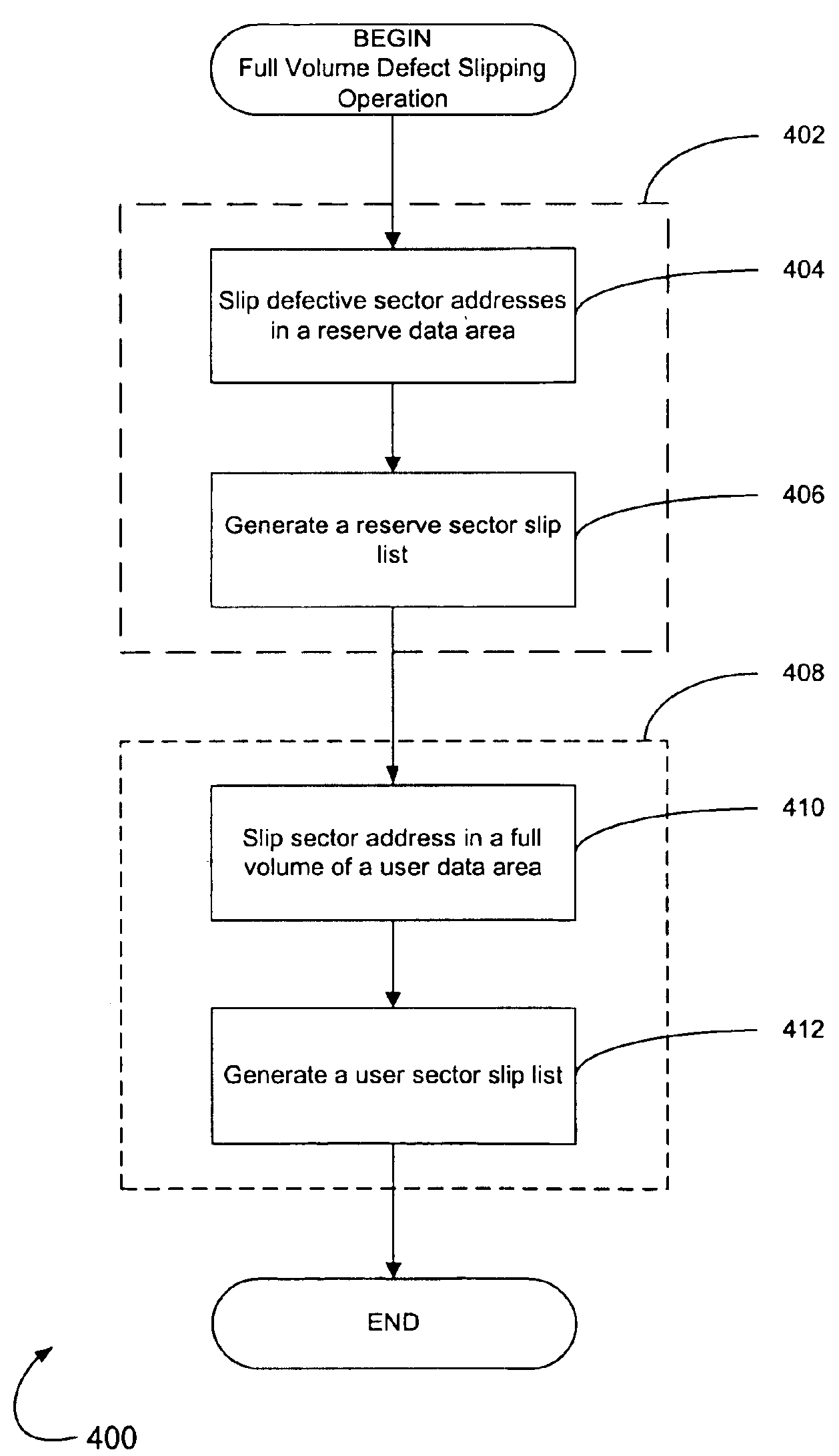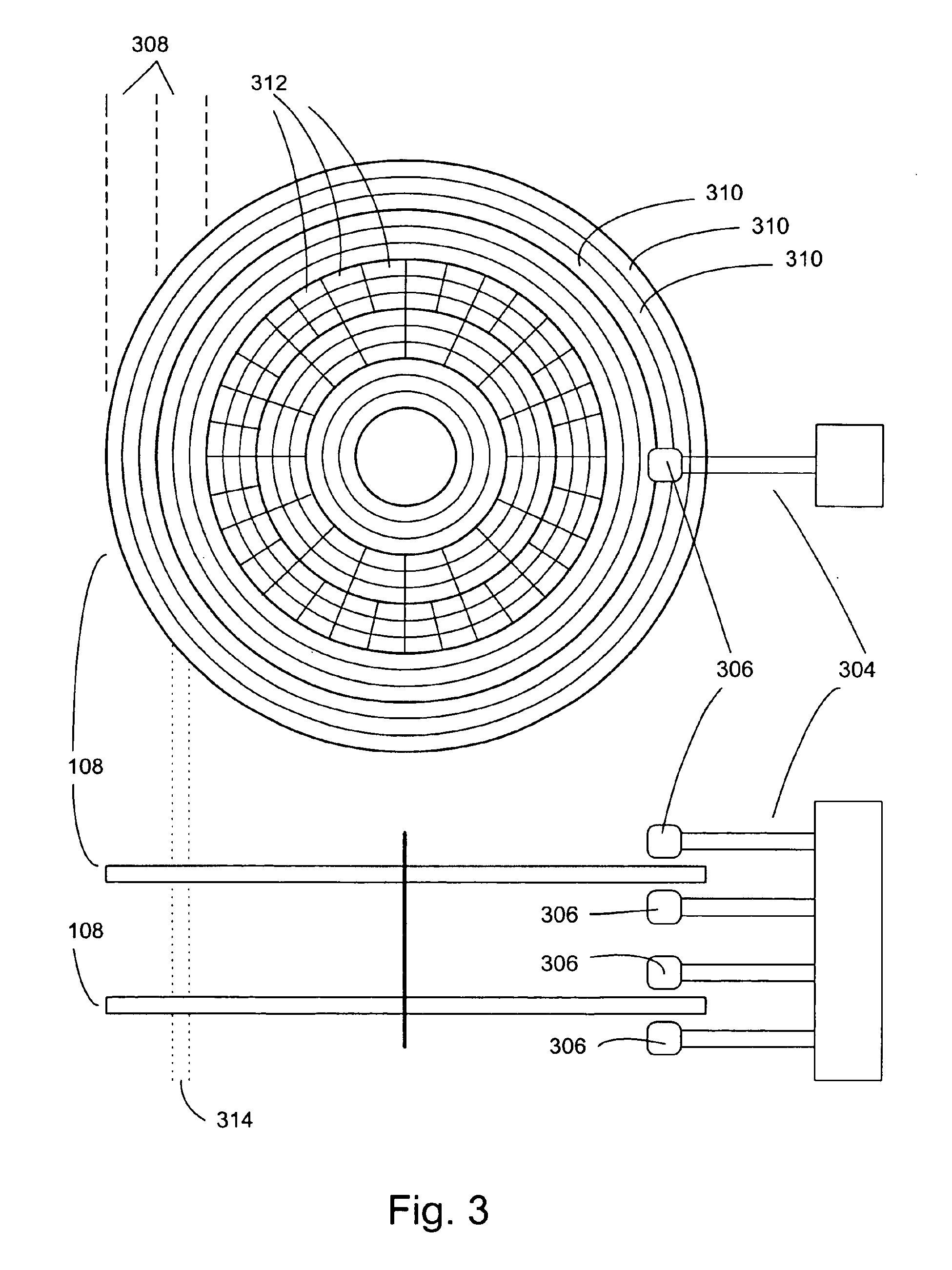Full volume slip defect management in a disc drive
a data storage and disc drive technology, applied in the direction of digital signal error detection/correction, instruments, recording signal processing, etc., can solve the problems of large time, large time delay, and non-linear relationship, and achieve the effect of minimizing the delay and latency delay of seek time and improving the speed efficiency of accessing data
- Summary
- Abstract
- Description
- Claims
- Application Information
AI Technical Summary
Benefits of technology
Problems solved by technology
Method used
Image
Examples
Embodiment Construction
[0036]A disc drive 100 constructed in accordance with a preferred embodiment of the present invention is shown in FIG. 1. The disc drive 100 includes a base 102 to which various components of the disc drive 100 are mounted. A top cover 104, shown partially cut away, cooperates with the base 102 to form an internal, sealed environment for the disc drive in a conventional manner. The components include a spindle motor 106, which rotates one or more discs 108 at a constant high speed. Information is written to and read from tracks on the discs 108 through the use of an actuator assembly 110, which rotates during a seek operation about a bearing shaft assembly 112 positioned adjacent the discs 108. The actuator assembly 110 includes a plurality of actuator arms 114 which extend towards the discs 108, with one or more flexures 116 extending from each of the actuator arms 114. Mounted at the distal end of each of the flexures 116 is a head 118, which includes an air bearing slider enablin...
PUM
 Login to View More
Login to View More Abstract
Description
Claims
Application Information
 Login to View More
Login to View More - R&D
- Intellectual Property
- Life Sciences
- Materials
- Tech Scout
- Unparalleled Data Quality
- Higher Quality Content
- 60% Fewer Hallucinations
Browse by: Latest US Patents, China's latest patents, Technical Efficacy Thesaurus, Application Domain, Technology Topic, Popular Technical Reports.
© 2025 PatSnap. All rights reserved.Legal|Privacy policy|Modern Slavery Act Transparency Statement|Sitemap|About US| Contact US: help@patsnap.com



